The allure of drifting and racing in JDM cars captivates car enthusiasts worldwide, drawing them into a culture rich with innovation and excitement. Originating in Japan, the Japanese Domestic Market (JDM) vehicles have transcended borders, influencing automotive communities globally. The combination of technical prowess and the thrill of racing creates an irresistible appeal for those passionate about cars. This article delves into the nuances of JDM car culture, exploring its influence, popularity, and future.
JDM cars, renowned for their performance and customization potential, dominate the automotive aftermarket, valued at approximately $1.3 trillion in 2021. Their modifications, from turbochargers to lightweight wheels, cater to enthusiasts seeking unique, high-performance vehicles. Major events like the Tokyo Auto Salon showcase these innovations, attracting massive crowds and setting trends in car performance upgrades. The rise of competitive drifting further fuels this culture, with events like Formula Drift engaging audiences since 2004, now featuring over 70 drivers and thousands of fans.
Drifting, once a niche sport, has burgeoned into a global phenomenon. The adrenaline rush of sliding a car sideways at high speeds demands skill and precision, making it an exciting challenge for both novices and seasoned drivers. The emergence of electric drifting, with brands like Nissan and Tesla entering the fray, highlights the sport’s adaptability to modern technological advances. Virtual drifting games like “Assetto Corsa” also offer new avenues for enthusiasts to engage with the culture, blending virtual and real-world experiences.
This article will explore these facets of JDM culture, offering insights into its history, current trends, and future directions. By understanding the intricacies of JDM cars and their modifications, readers can appreciate the artistry and dedication behind this vibrant community. Whether you are an avid racer or a curious newcomer, the journey into JDM car culture promises to be as thrilling as it is enlightening.
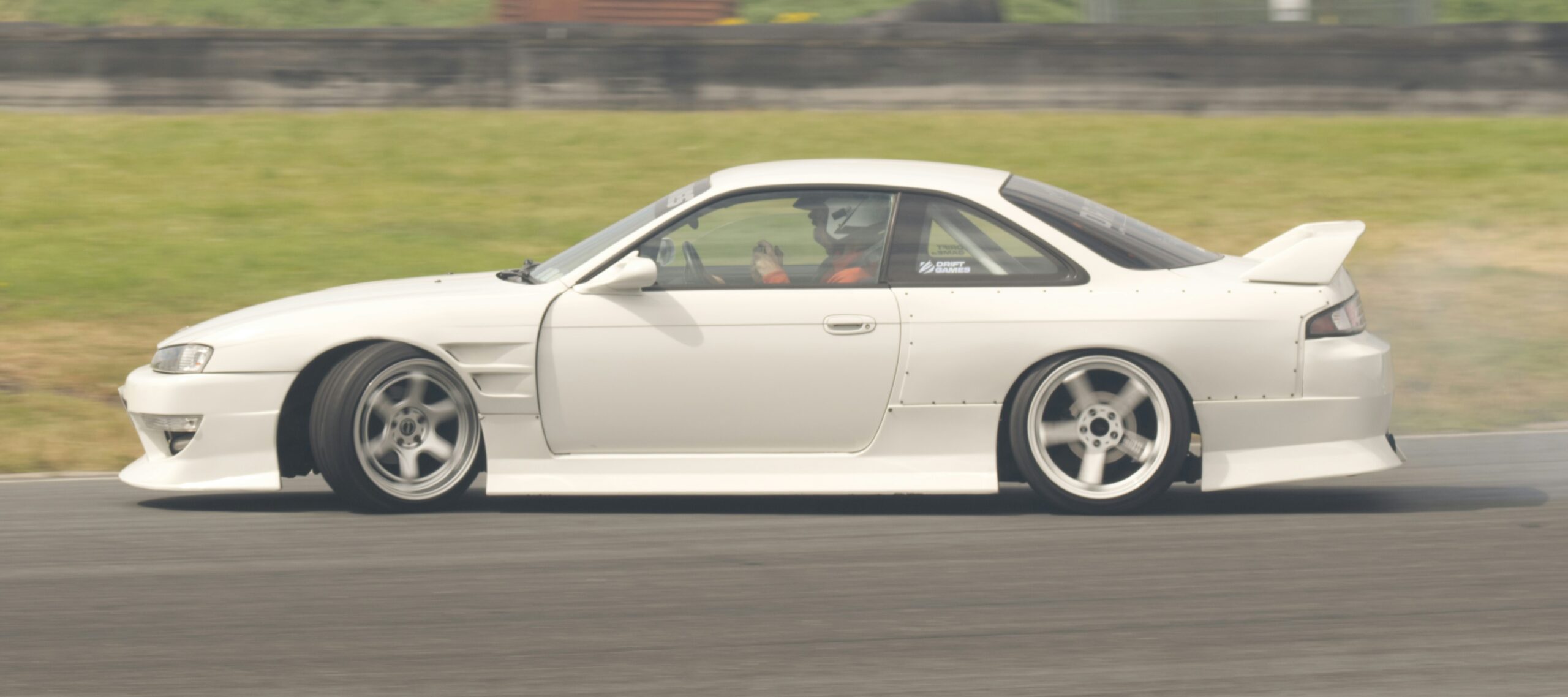
Photo by Kevin Dowling on unsplash
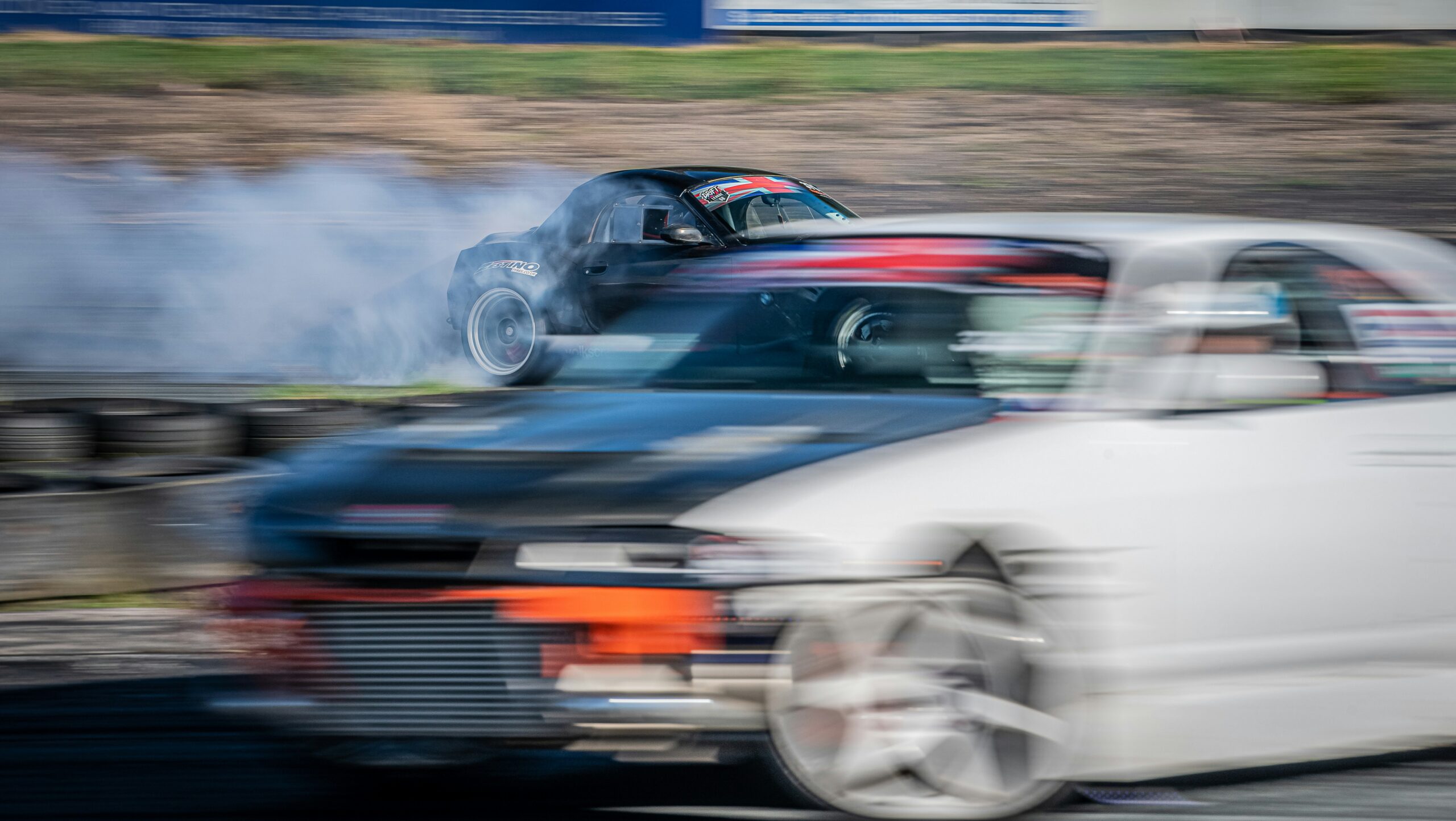
Photo by JOHN BEARBY IMAGES on Unsplash
Understanding JDM Cars
Origins and Evolution of JDM Cars
The term “Japanese Domestic Market” (JDM) refers to vehicles and parts originally manufactured for sale in Japan. JDM cars have a rich history dating back to the 1960s, when Japanese automakers began producing compact, performance-oriented vehicles. Models like the Nissan Skyline GT-R and Toyota Celica were pioneers, showcasing the unique blend of performance and reliability that defined JDM vehicles. Over the years, the evolution of JDM cars has been marked by a commitment to innovation and engineering excellence, making them highly sought after in the global motorsport community.
Key Features of JDM Cars
JDM cars are distinct for several reasons. First, they often feature advanced technology and engineering not found in models intended for other markets. This includes high-revving engines, turbochargers, and lightweight construction. The emphasis on performance is complemented by meticulous attention to detail, ensuring superior handling and power delivery. Additionally, JDM cars often come with unique aesthetic features, such as exclusive trim options and styling, making them stand out in racing events and car shows.
Advantages in Motorsport Activities
JDM cars are favored in motorsport activities like competitive drifting due to their performance capabilities and adaptability. Their lightweight design and powerful engines make them ideal for drifting, where precision and control are paramount. The Nissan Silvia S15 and Toyota AE86 are iconic in the drifting scene, valued for their rear-wheel-drive configuration and balance. JDM cars also have a reputation for durability and reliability, crucial factors in competitive racing where consistency can be the difference between winning and losing. Furthermore, the availability of a wide range of JDM car modifications enables enthusiasts to tailor their vehicles for specific racing and drifting needs, enhancing both performance and style.
JDM Car Modifications
Modifying JDM cars is a significant aspect of the culture, allowing for personalization and performance enhancement. Popular modifications include installing turbochargers, aftermarket exhaust systems, and coilover suspension kits. These upgrades not only improve horsepower and torque but also enhance handling and aerodynamics, essential for both drifting and traditional racing competitions. Notably, the motorsport community values these modifications for the creative expression they allow, fostering a vibrant culture of innovation and individuality.
Real-World Examples and Success Stories
Real-world examples of JDM cars excelling in motorsport are abundant. Chris Forsberg, a renowned Formula Drift champion, has consistently demonstrated the potential of JDM modifications in competitive drifting. His success underscores the importance of tuning and customization in achieving peak performance. Additionally, the anime “Initial D” has played a significant role in popularizing JDM cars and drifting, inspiring a generation of car enthusiasts to explore the capabilities of vehicles like the Mazda RX-7.
Actionable Tips for Enthusiasts
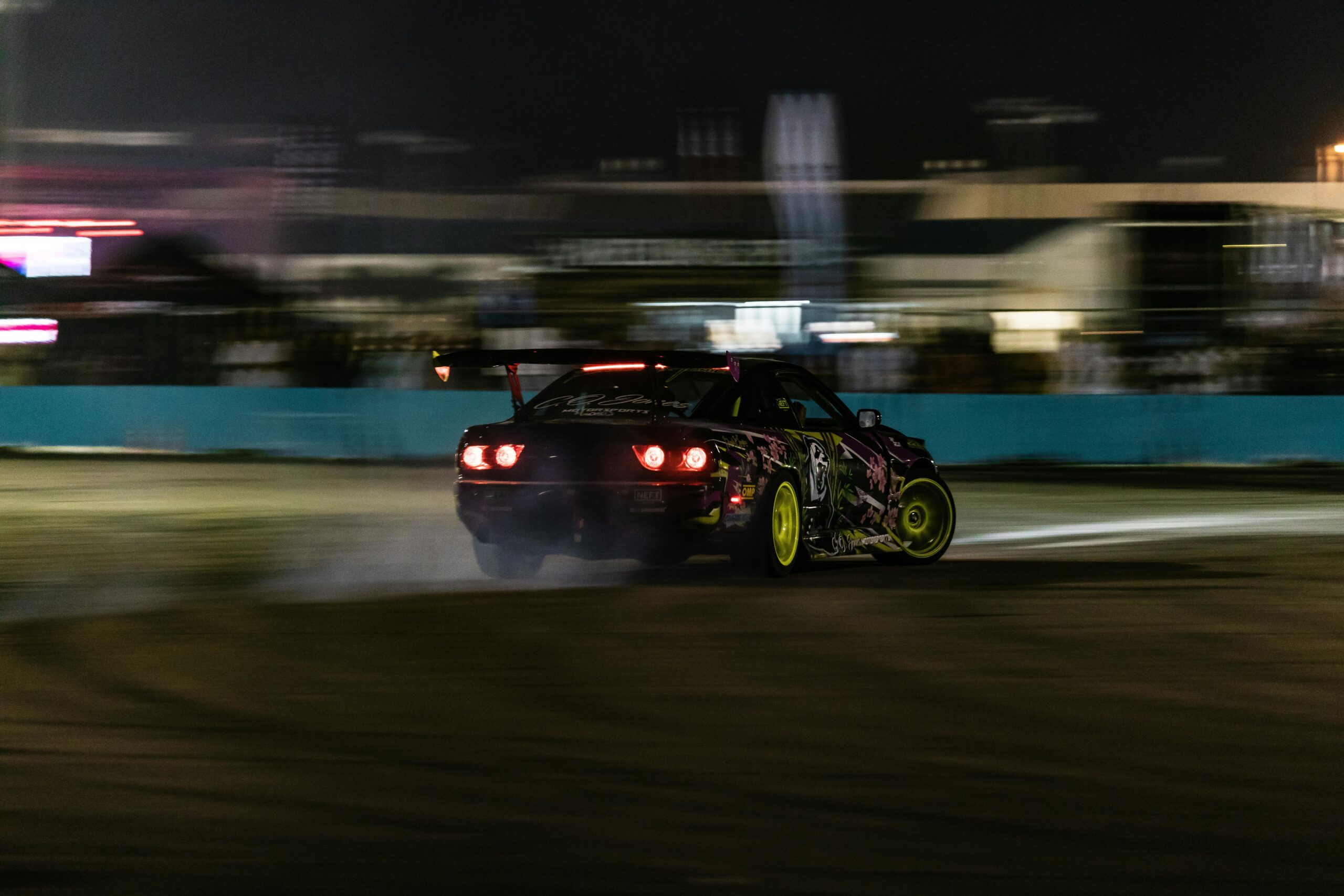
Photo by PeopleByOwen on Pexels
For those looking to delve into the world of JDM cars and competitive drifting, several actionable tips can enhance your experience:
Start with a Solid Foundation: Choose a reliable JDM model known for its performance and modifiability.
Learn and Practice: Attend drifting schools and workshops to develop the necessary skills safely.
Join the Community: Engage with local and online motorsport communities to share knowledge and experiences.
Understanding JDM cars and their role in motorsport culture is essential for any enthusiast. Their unique features, coupled with the potential for extensive modifications, make them perfect for those seeking to participate in drifting and racing. As JDM culture continues to influence global automotive trends, it remains a testament to the innovation and passion that drive the world of motorsports.
Iconic JDM Models for Drifting and Racing
Nissan Silvia S15: The Drifting Favorite
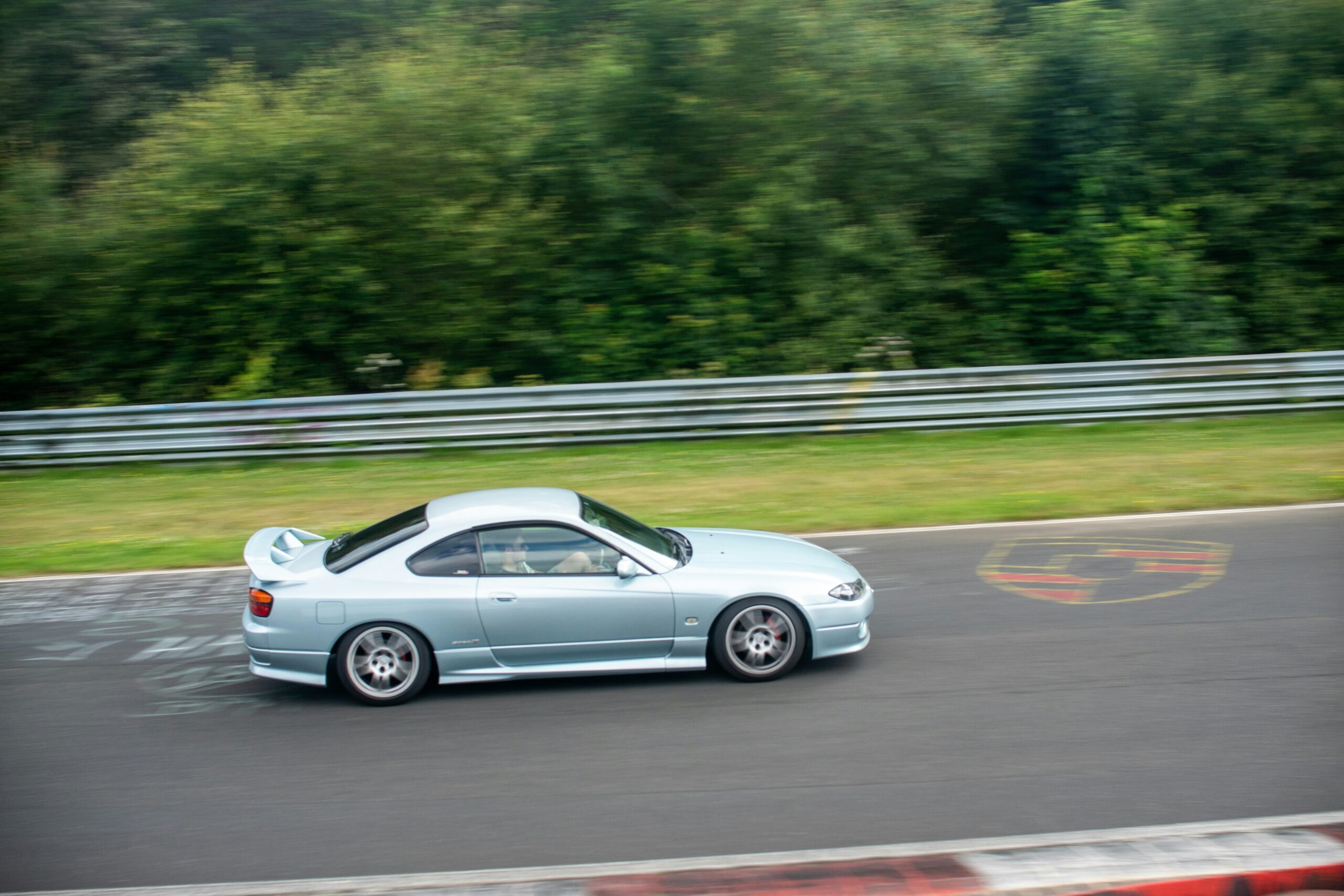
Photo by Luca Hooijer on unsplash
The Nissan Silvia S15 is a standout in the drifting and racing community. Known for its sleek design and balanced weight distribution, the S15 offers exceptional handling that makes it ideal for competitive drifting. Originating in the late 1990s, this model became a staple in JDM car modifications due to its lightweight chassis and rear-wheel-drive configuration. Drifters often opt for performance upgrades such as turbochargers and coilover suspension kits to enhance the S15’s capabilities. These modifications improve the car’s agility and power, maximizing its potential on the track.
Throughout its history, the Silvia S15 has achieved notable success in various racing events. Its presence in the D1 Grand Prix, a professional drifting series originating in Japan, highlights its prowess in the motorsport community. The S15’s combination of style and performance continues to attract enthusiasts worldwide, cementing its reputation as an iconic JDM model.
Toyota AE86: The Cult Classic

Photo by Pacha パチャ Shot’s on unsplash
The Toyota AE86, often referred to as the “Hachiroku,” is legendary in JDM car culture. Made famous by the anime series “Initial D,” the AE86’s lightweight build and rear-wheel-drive setup make it a drifting icon. Though production ceased in the late 1980s, the AE86 remains a popular choice for car performance upgrades. Enthusiasts frequently install aftermarket exhaust systems and performance tires to boost its drifting capabilities.
The AE86’s influence extends beyond its technical specifications. It represents a cultural phenomenon that embodies the spirit of grassroots racing events. Its success in competitive drifting, particularly in amateur circuits, underscores its enduring appeal. Despite being an older model, the AE86 exemplifies how JDM car modifications can transform a classic into a formidable competitor.
Mazda RX-7: The Rotary Pioneer
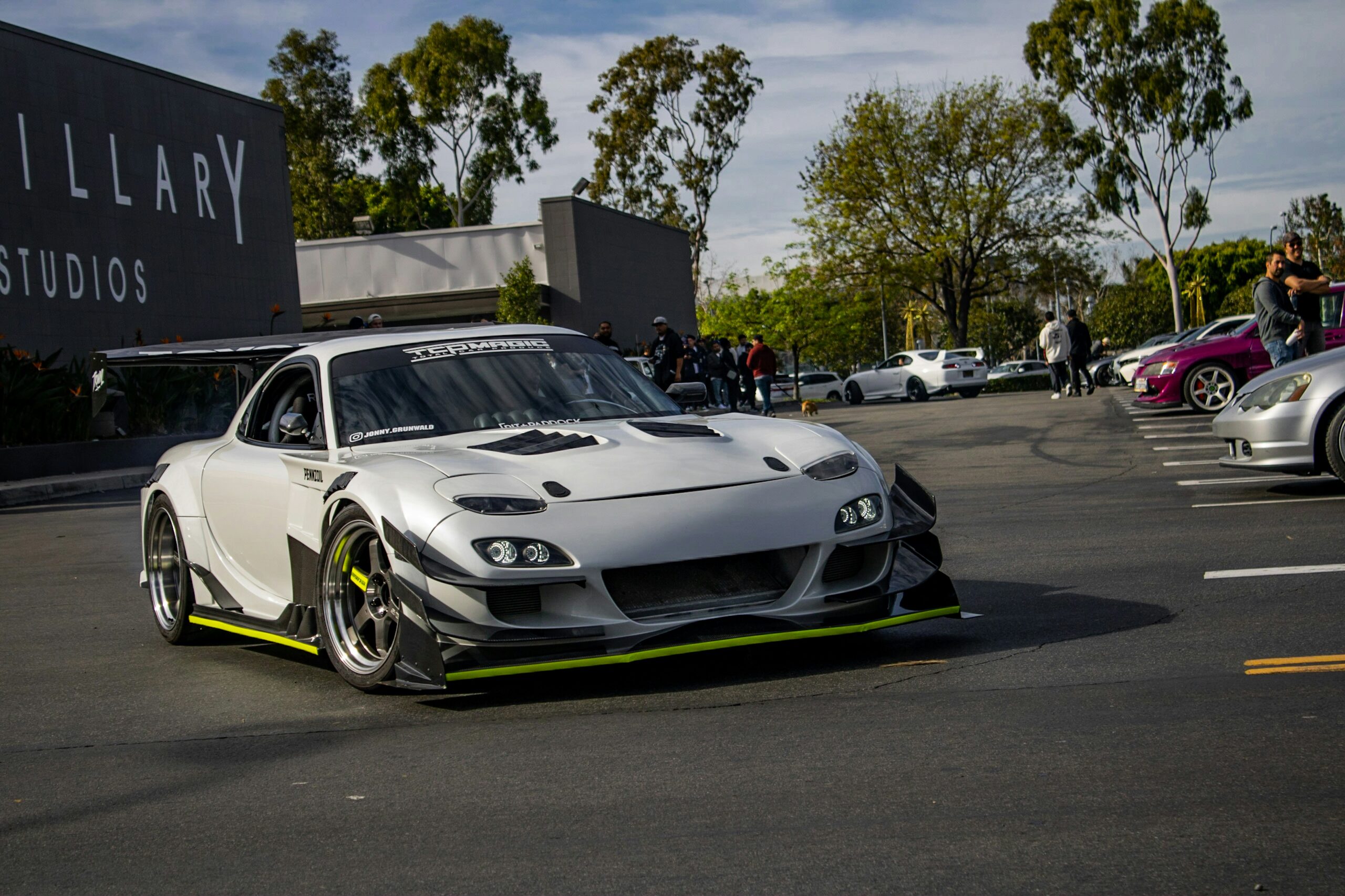
Photo by Komorebi Photo on unsplash
The Mazda RX-7 is another beloved model in the JDM community, renowned for its unique rotary engine. This engine design offers a high power-to-weight ratio, contributing to the RX-7’s exceptional performance. In drifting and racing, the RX-7 benefits from modifications such as suspension upgrades and lightweight wheels, which enhance its cornering ability and speed.
Throughout its history, the RX-7 has been showcased in prominent racing events, including the All-Japan GT Championships. Its distinctive engine sound and sleek aesthetics make it a favorite among motorsport enthusiasts. The RX-7’s success in competitive drifting highlights the potential of JDM car modifications to elevate performance and style.
Honda Civic Type R: The Track Specialist
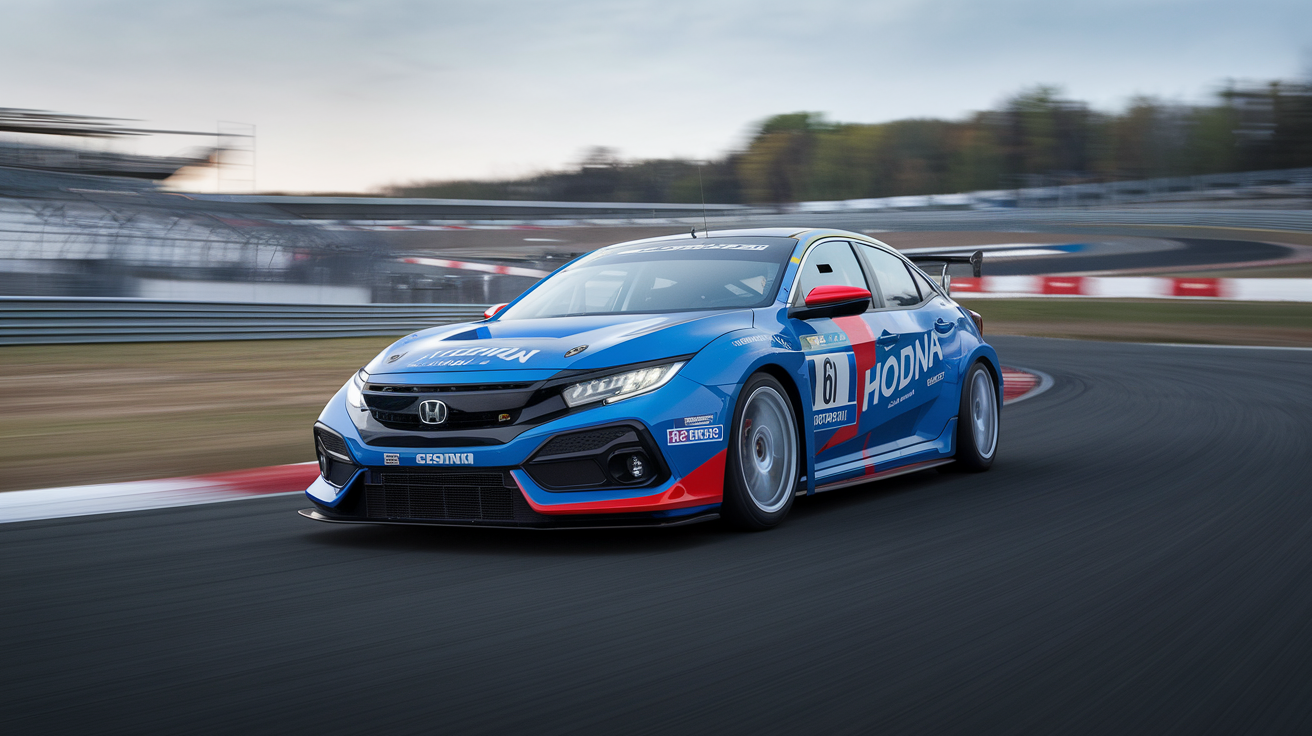
EK Hodna Civic race livery on a track with motion blur
While the Honda Civic Type R is traditionally associated with circuit racing, its versatility extends to the drifting scene. Known for its front-wheel-drive layout, the Type R achieves impressive handling through car performance upgrades. Modifications such as turbocharging and advanced suspension systems allow it to compete in various racing events.
The Type R’s presence in the motorsport community is marked by its achievements in time attack events, where precision and speed are paramount. Its adaptability and reliability make it a popular choice for those seeking a balanced approach to drifting and racing. The Civic Type R exemplifies how JDM modifications can optimize a vehicle for diverse motorsport applications.
Subaru Impreza WRX STI: The All-Wheel Drive Contender
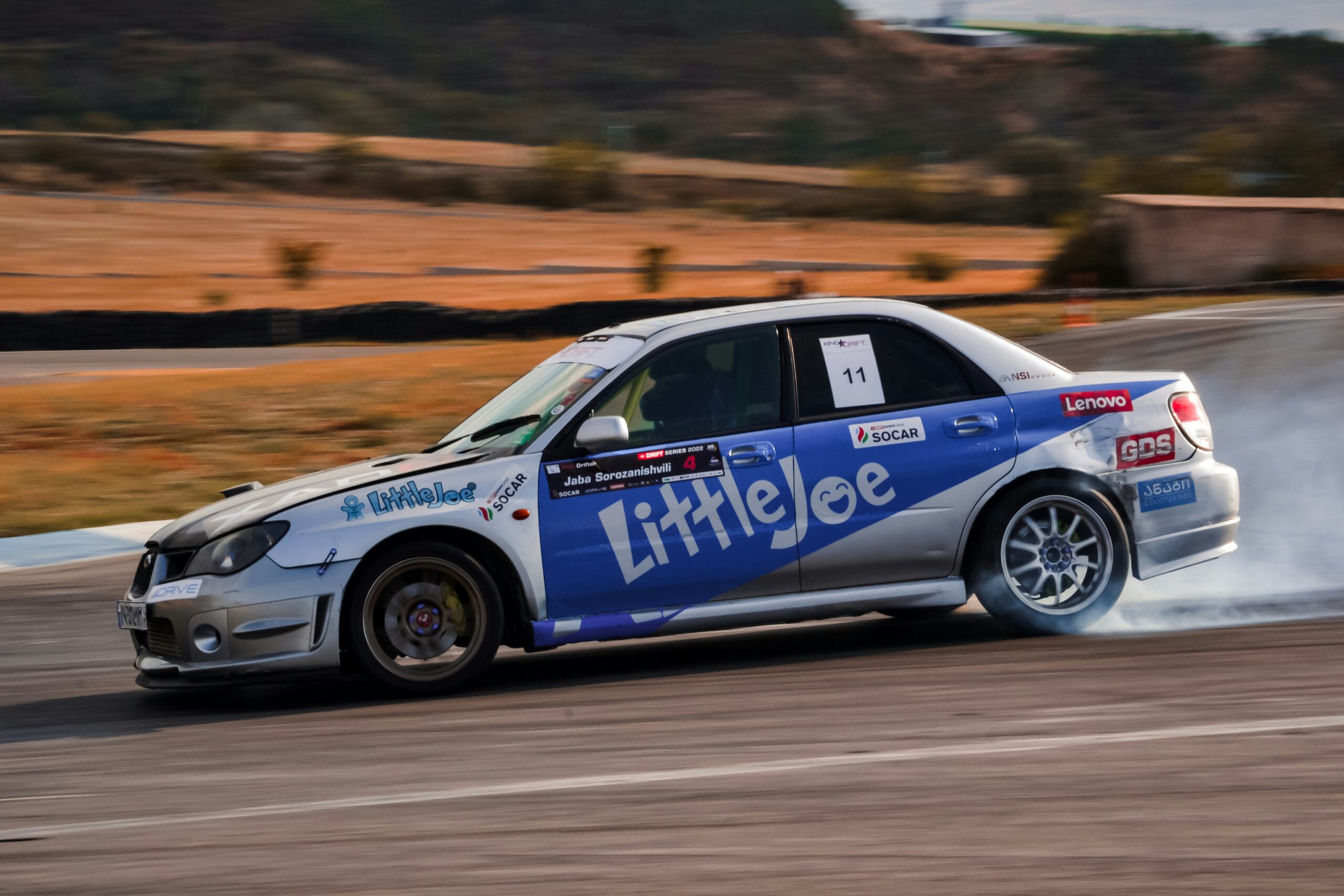
Photo by Nika Qufarashvili on unsplash
The Subaru Impreza WRX STI is renowned for its all-wheel-drive system, offering unparalleled traction and control. This feature makes it a formidable competitor in both drifting and racing. Enthusiasts often enhance the STI with performance upgrades, such as upgraded exhaust systems and high-performance tires, to maximize its potential on the track.
In the realm of competitive drifting, the WRX STI’s balanced handling and power make it a unique choice. Its success in rally racing events, including the World Rally Championship, demonstrates its versatility and durability. The STI’s ability to adapt to various racing formats highlights the value of JDM car modifications in achieving optimal performance.
Actionable Tips for Aspiring Drifters
Start Small: Begin with a manageable car and gradually implement performance upgrades as you gain experience.
Join a Community: Engage with local motorsport communities to share insights and gain practical advice.
Focus on Safety: Invest in quality safety gear and practice in controlled environments to minimize risks.
Conclusion
Iconic JDM models like the Nissan Silvia S15, Toyota AE86, Mazda RX-7, Honda Civic Type R, and Subaru Impreza WRX STI exemplify the fusion of culture, performance, and innovation in drifting and racing. Each model’s unique characteristics and potential for enhancements through JDM car modifications contribute to their enduring popularity in the motorsport community. Whether participating in grassroots racing events or high-profile competitions, these vehicles offer enthusiasts a canvas for creativity and performance excellence. Embracing the thrill of drifting and racing in JDM cars not only enhances driving skills but also fosters a sense of community and shared passion. As technology and trends evolve, the legacy of these iconic models will continue to inspire future generations of car enthusiasts.
Getting Started with Drifting and Racing in JDM Cars
Selecting the Right JDM Car for Drifting and Racing
When diving into the thrilling world of drifting and racing in JDM cars, choosing the right vehicle is crucial. Iconic models like the Nissan Silvia S15, Toyota AE86, and Mazda RX-7 are celebrated for their lightweight design and rear-wheel-drive configurations, making them ideal for drifting enthusiasts. However, selecting the perfect car depends on your goals, budget, and skill level. For beginners, starting with a more affordable model, such as a Nissan 240SX, can be beneficial. This model offers a balance of performance and accessibility, allowing newcomers to explore modifications gradually.
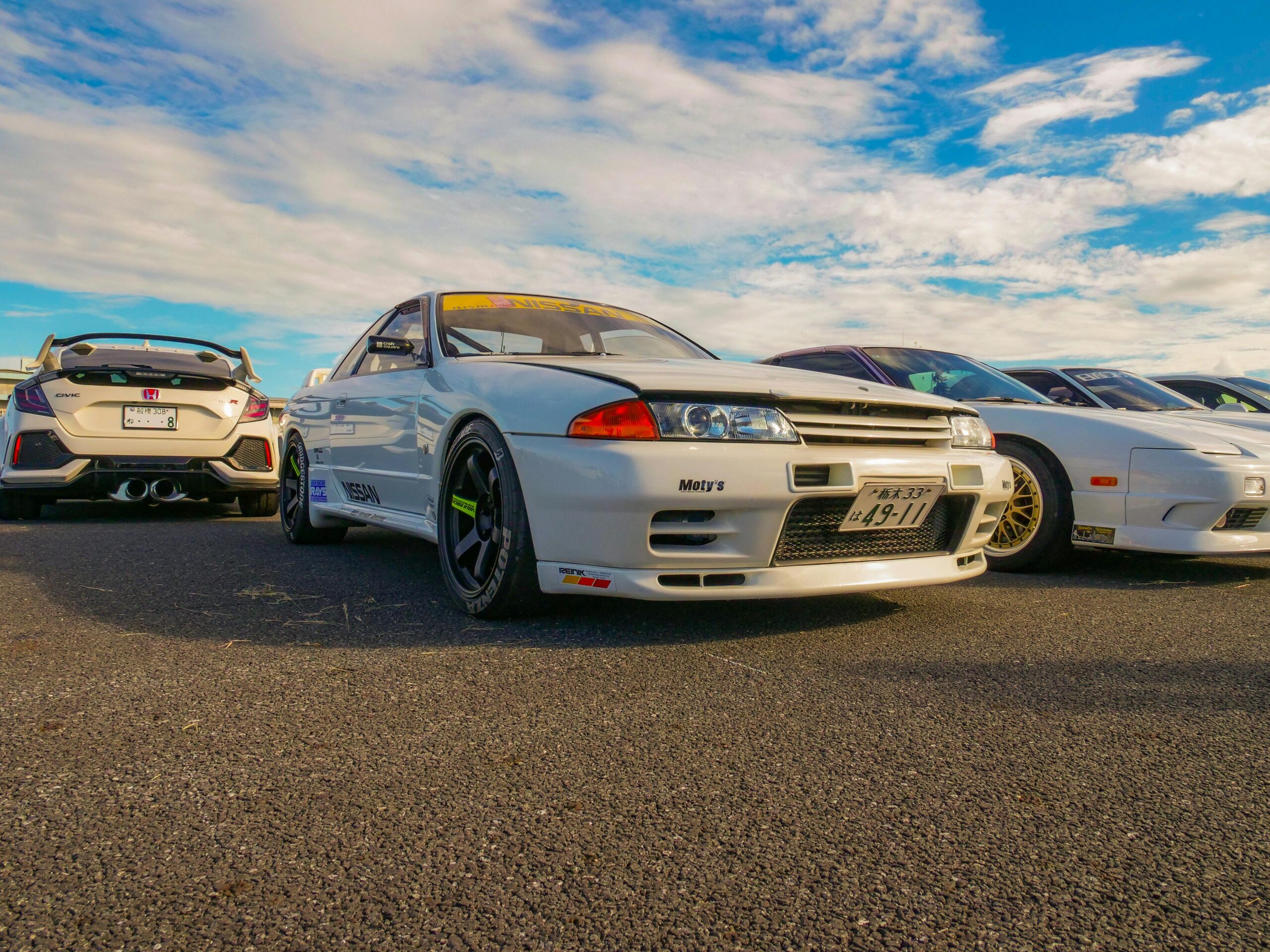
Photo by JDM Kuruma on Pexels
Essential JDM Car Modifications
To compete in competitive drifting and racing events, you’ll need to invest in specific JDM car modifications. Suspension upgrades are vital, as they improve handling and control, ensuring your vehicle can maneuver through tight corners with precision. Coilover suspension kits are a popular choice, offering adjustable ride heights and greater stability. Additionally, lightweight wheels and performance tires enhance grip and reduce unsprung weight, crucial for maintaining control during high-speed drifts.
Under the hood, turbochargers and aftermarket exhaust systems can significantly boost your car’s power output. Turbochargers increase engine efficiency, allowing for rapid acceleration, while a performance exhaust system reduces back pressure, enhancing overall engine performance. It’s also wise to upgrade the braking system to ensure you can stop promptly when needed, minimizing risks during intense driving sessions.
Engaging with the Motorsport Community
Becoming part of the motorsport community is invaluable for both learning and networking. Local car clubs and online forums are excellent starting points, providing platforms to share experiences and gain insights from seasoned racers. Attending events such as the Tokyo Auto Salon or Formula Drift can offer firsthand exposure to the latest trends and techniques in the JDM scene. These gatherings are not just about competition; they celebrate the communal aspect of car culture, where enthusiasts exchange knowledge and tips.
Virtual drifting platforms like “Assetto Corsa” and “Forza Motorsport” have also gained popularity, offering a safe environment to practice drifting techniques. These simulations are not only fun but also educational, allowing drivers to experiment with different vehicles and setups without the physical wear and tear.
Participating in Racing Events
Entering racing events is a dream for many JDM enthusiasts, yet it requires preparation and dedication. Start by participating in track days or amateur drifting competitions to build confidence and experience. These events provide a controlled setting to hone your skills, understand your car’s limits, and learn from fellow racers.
Safety should always be a priority. Investing in quality safety gear, including helmets, gloves, and racing suits, is essential. Not only do these items protect you, but they also comply with event regulations. Additionally, consider enrolling in professional driving courses to refine your techniques. These courses cover essential skills such as throttle control, weight transfer, and emergency maneuvers, laying a solid foundation for competitive driving.
Balancing Performance and Sustainability
As the JDM car culture evolves, sustainability becomes increasingly relevant. Enthusiasts are now exploring eco-friendly performance upgrades, such as electric drifting capabilities and sustainable materials for modifications. The growing interest in electric vehicles like the modified Nissan Leaf showcases this shift towards greener options in motorsports.
Integrating technology, such as data analytics and telemetry, is another trend transforming the industry. These tools provide real-time insights into car performance, allowing drivers to fine-tune their setups for optimal results. By embracing these advancements, you can stay ahead in the competitive landscape of JDM racing.
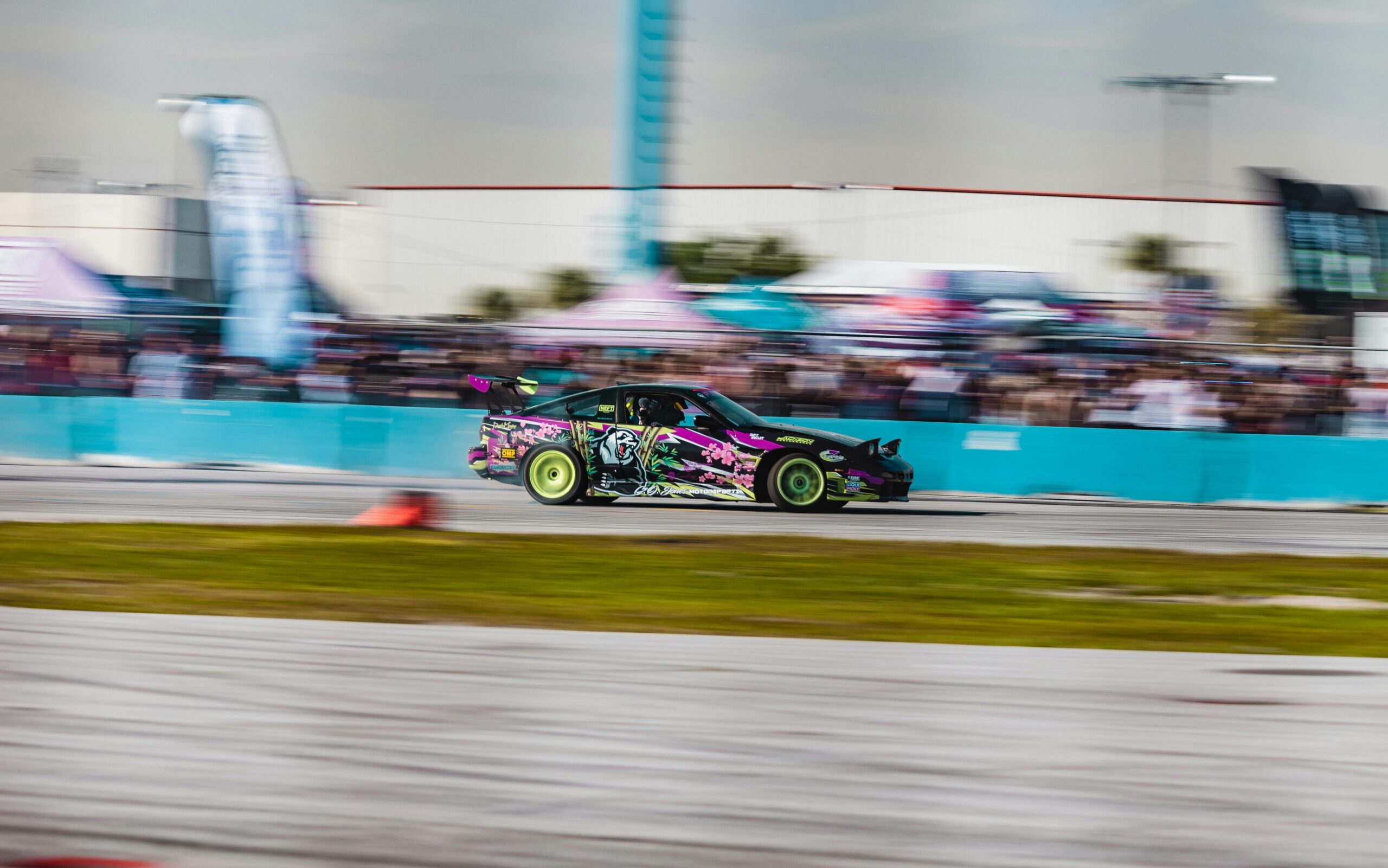
Photo by PeopleByOwen on Pexels
In conclusion, embarking on your journey with drifting and racing in JDM cars involves careful planning and community engagement. By selecting the right vehicle, investing in key modifications, and participating in the motorsport community, you can unlock the exhilarating potential of JDM racing. As you progress, remember that this culture is not just about speed; it celebrates creativity, camaraderie, and the shared passion for automotive excellence.
Conclusion
The Enduring Allure of JDM Car Culture
The world of drifting and racing in JDM cars continues to captivate automotive enthusiasts globally. JDM cars have carved a niche in the racing and drifting scenes due to their unique combination of performance, style, and cultural significance. Iconic events like the Tokyo Auto Salon and the thriving motorsport community highlight the impact of JDM vehicles. With the global automotive aftermarket, including JDM modifications, valued at $1.3 trillion in 2021, these cars’ appeal shows no signs of waning.
Exploring JDM Car Modifications
For those eager to dive into this exciting world, exploring JDM car modifications is an excellent starting point. From turbochargers to suspension upgrades, these modifications enhance car performance, making vehicles more competitive in racing events. As competitive drifting gains traction, modifications such as lightweight wheels and performance tires become essential for success. The rise of electric drifting shows the culture’s adaptability, with manufacturers like Nissan investing in eco-friendly alternatives.
Actionable Steps and Community Involvement
To immerse yourself in this dynamic culture, consider these actionable steps:
Attend a drifting school to gain foundational skills and confidence.
Invest in safety gear, including helmets and racing suits, for protection during events.
Join local car clubs or online forums to connect with fellow enthusiasts and share knowledge.
These steps will deepen your understanding and enhance your enjoyment of JDM culture.

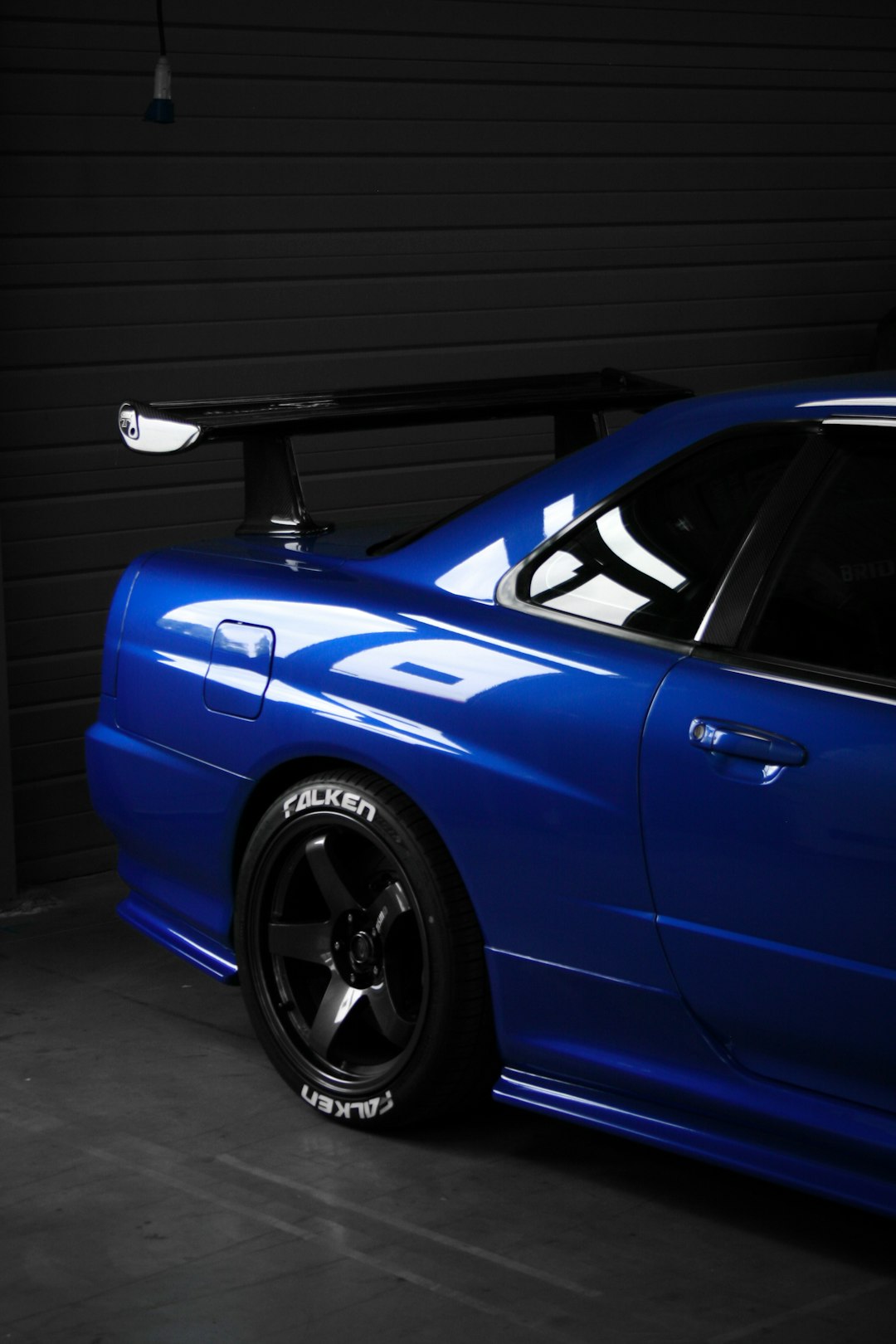
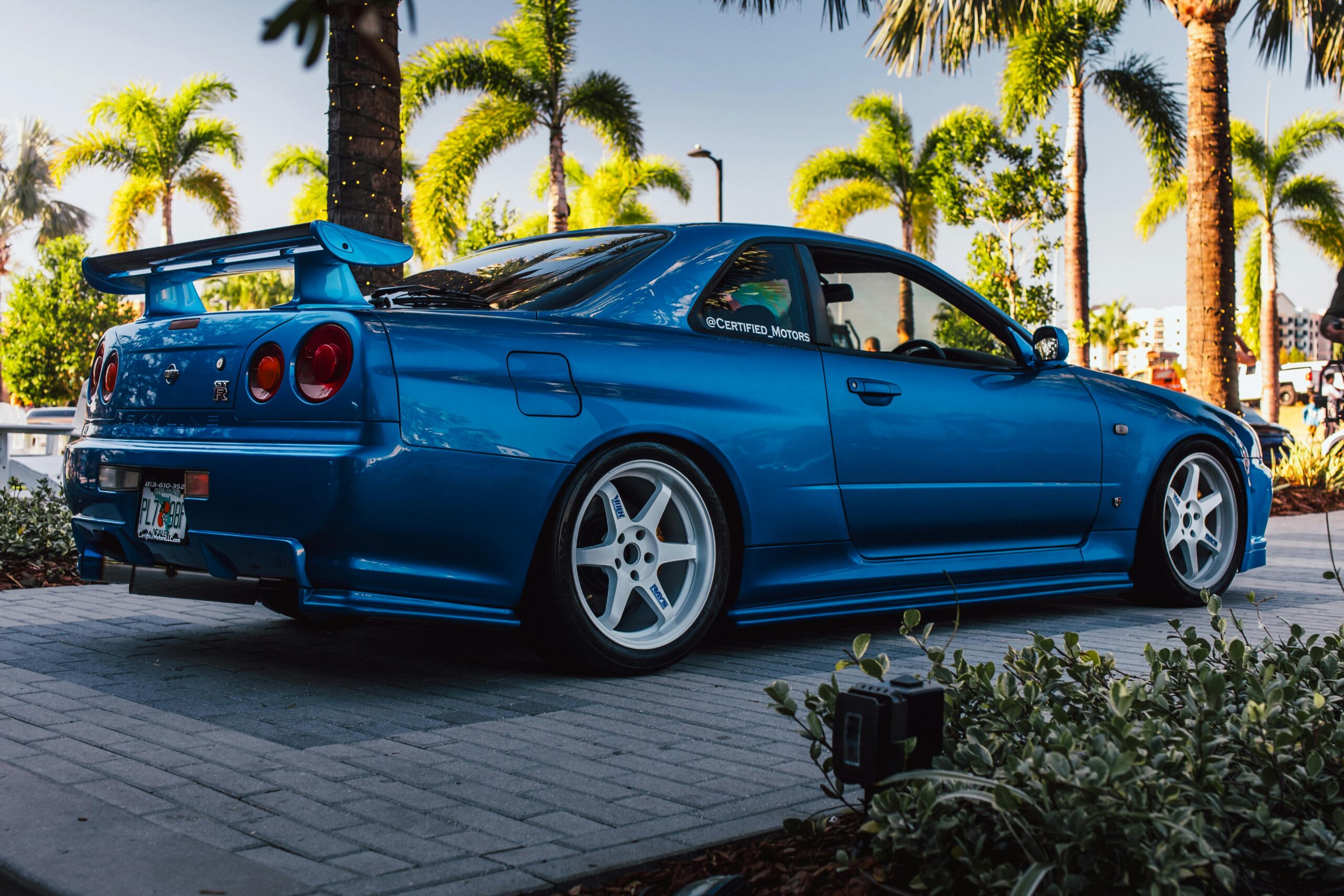
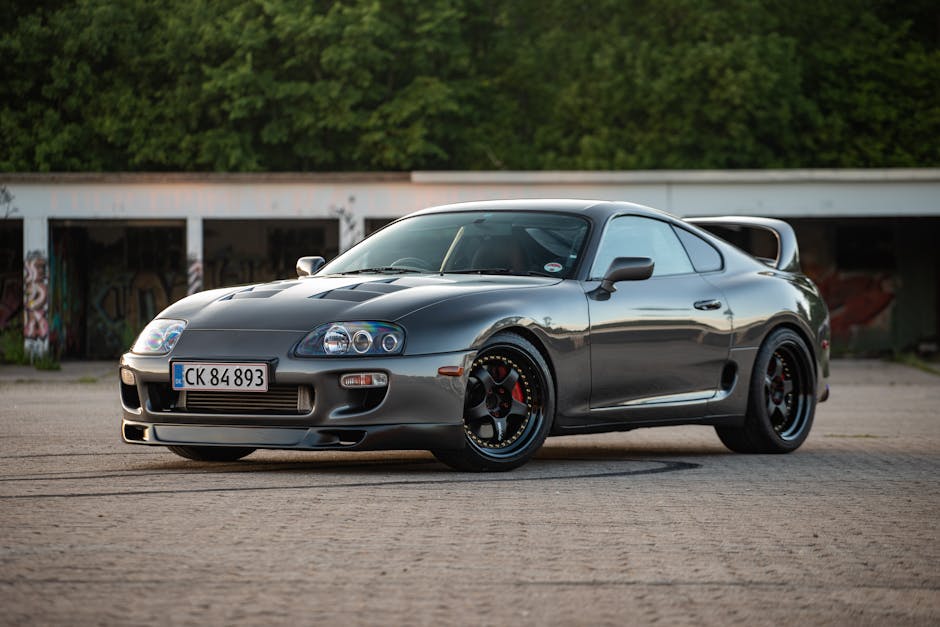
Add your first comment to this post